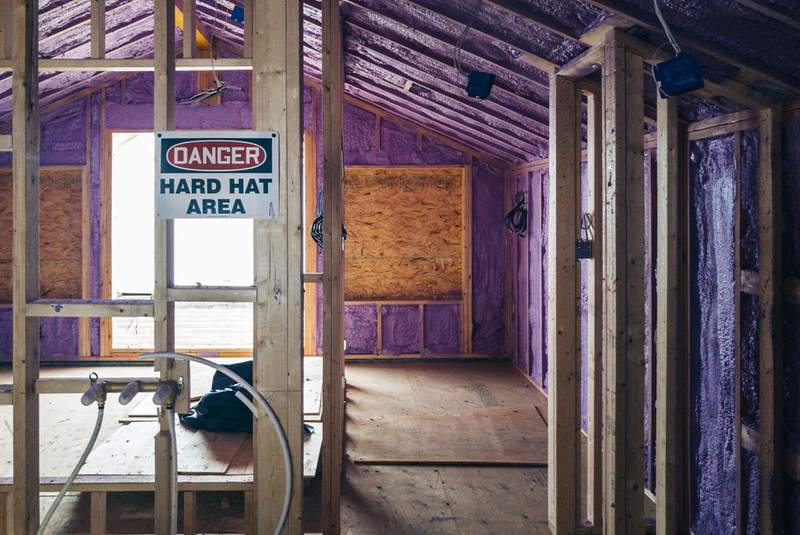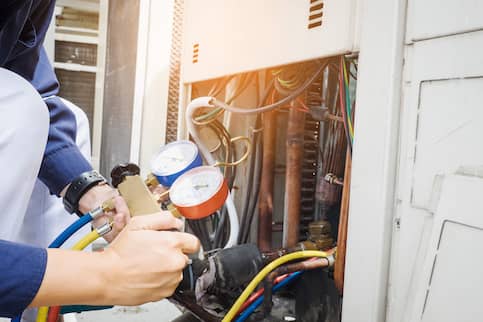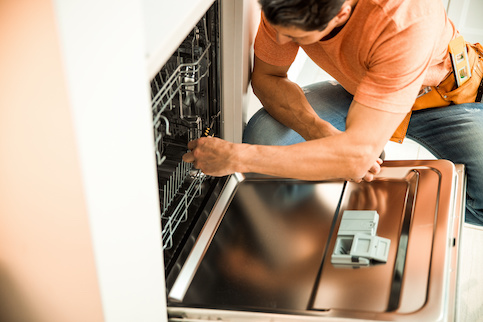Are you in the middle of the home buying process and interested in changing your insurance policy? Have you had the same policy for some time and want to know what else is available? Are you looking to lower your premiums or expand your coverage?
Whatever the case, this guide to changing homeowners insurance will give you the answers to your questions. We’ll walk you through reasons to change your insurance and how to go about doing it.
Continue reading to learn what you need to know when changing your policy.
What Is Homeowners Insurance?
For those in need of a brief refresher, homeowners insurance is a safety net that protects you and your property from hazards like storms and theft, and provides liability coverage if someone gets hurt on your property. It’s usually required by your mortgage company and protects you to varying degrees depending on your level of coverage.
Homeowners insurance protects your home and the land it’s on. It shouldn’t be confused with private mortgage insurance, or PMI, which is insurance you pay to your mortgage lender if your down payment is less than 20%. It also shouldn’t be confused with a home warranty, which is a warranty that covers replacing outdated and broken household appliances.
See What You Qualify For
Buy A Home
Discover mortgage options that fit your unique financial needs.

Refinance
Refinance your mortgage to have more money for what matters.
Tap Into Equity
Use your home’s equity and unlock cash to achieve your goals.
I’m Moving, Do I Have To Change My Homeowners Insurance?
Yes, your homeowners insurance policy will change. When you move, your old homeowners insurance policy ends. This is because each policy is based on the home it covers. You can choose to open a new policy with the same insurance company or use the move as an opportunity to start a policy with a new company.
Other Reasons To Change Your Homeowners Insurance
If you’re not moving, there are other reasons to change your homeowners insurance policy. One big reason is to see if you can get a lower premium for the same amount of coverage. Shopping around could save you money on your home insurance.
Another reason to change your homeowners insurance is if you want more coverage. Maybe there’s an increased risk of flooding in your area and you want to add flood insurance, or you want coverage that will fully replace your home in case of a catastrophe. Protecting a valuable asset like your home is important, and if you think there’s a good reason to raise your coverage, it may be worth the extra cost.
Steps To Take
The process for changing your homeowners insurance is quick and easy. It shouldn’t require more than a few phone calls and filling out some straightforward paperwork. Most of the work will be comparing policies and deciding on the coverage you need.
If you’re considering changing your homeowners insurance policy, here are a few steps you should be aware of.
Compare Policies
You need to start by getting the exact details of your current policy. Contact your current insurance company and request a declarations page. This page itemizes all your coverage and limits, making it easier to compare the components of other policies.
With the declarations page, you can shop around, reviewing similar policies and seeing what they do and don’t cover in comparison. Maybe you want more coverage or think that you’re overpaying for the coverage you have. The declarations page makes it easier to see what you’re paying for.
Differences in prices can reflect differences in coverage. With an itemized list in hand, you can assess your needs, gauge risk and decide what level of coverage you need. You may find you need to purchase additional hazard insurance to fully protect your home.
Contact Your Current Insurance Company ASAP
Contacting your current insurance as early as possible about the change can turn out in your favor. This applies especially if you’re moving and there’s a solid end date to you being in your home. Companies may allow a cancelation to be backdated if advanced notice is given.
Buy A New Policy
Buying a new policy while staying with your current insurance company is relatively simple. If you’re moving or want to update your coverage, calling your current insurance company is the best way to get the ball rolling.
However, if you want to change insurance companies, you’ll need to do some shopping around. Compare policies like we mentioned above and determine the new company and coverage that works best for you. From here, contact the new insurance company. This will put you in touch with an insurance agent who will walk you through the paperwork and get you an accurate coverage quote.
Make Sure You Get Your Premium Refund
If you’re switching companies, be sure to get a refund on any premiums you’ve paid in advance. Work with the agent from the new company to make sure this premium is refunded. Since most people pay their homeowners insurance in advance, this could be a significant amount.
How Do You Change Your Homeowners Insurance If You Have An Escrow Account?
If you have an escrow account, don’t worry. The process for changing your homeowners insurance is still simple. All the steps listed above to change your policy apply and there’s only a couple extra pieces that you need to address.
Here’s what you need to do to make sure your escrow account is on track when changing your homeowners insurance.
Contact Your Lender
Your mortgage lender needs to be notified of the change in your homeowners insurance since they manage your escrow account. Do this to avoid overpaying on insurance and to make sure the refunds you qualify for are received. Work with your new insurance agent and your mortgage lender to be sure everything is squared away for your escrow account.
Be Aware That An Escrow Shortage Could Result
An escrow shortage as a result of changing homeowners insurance typically only occurs if you’re remaining in your current home and upgrading your insurance policy. The shortage is caused by the new insurance policy being more expensive than the current escrow “budget” has allowed for.
Being aware that a shortage can occur in this situation gives you the chance to plan for it. There’s a chance it will only be a small inconvenience but budgeting a little money for it can help you avoid an unwanted surprise.
The Bottom Line: Changing Homeowners Insurance Shouldn’t Be A Headache
Changing homeowners insurance isn’t complicated, even if you have an escrow account. Get a copy of your declarations page and use it to compare coverages. Assess what you need and what you can risk going without. Note that many types of hazards, like flooding, aren’t covered under standard homeowners insurance and require an additional policy.
Be aware that changes to your policy could change your escrow payment. If you’re switching to a cheaper policy, that’s fine, but if you’re going with a more extensive policy, your escrow payment could rise and there could be an escrow shortage. Just knowing a shortage is a possibility can help you prepare for it.
If you’re worried about a higher escrow payment or want to see if you can lower your current payment, you may want to look at ways to achieve lower property taxes.

Victoria Araj
Victoria Araj is a Staff Writer for Rocket Companies who has held roles in mortgage banking, public relations and more in her 15-plus years of experience. She has a bachelor’s degree in journalism with an emphasis in political science from Michigan State University, and a master’s degree in public administration from the University of Michigan.












